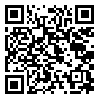BibTeX | RIS | EndNote | Medlars | ProCite | Reference Manager | RefWorks
Send citation to:
URL: http://ijeee.iust.ac.ir/article-1-903-en.html
Traditional noise removal methods like Non-Local Means create spurious boundaries inside regular zones. Visushrink removes too many coefficients and yields recovered images that are overly smoothed. In Bayesshrink method, sharp features are preserved. However, PSNR (Peak Signal-to-Noise Ratio) is considerably low. BLS-GSM generates some discontinuous information during the course of denoising and destroys the flatness of homogenous area. Wavelets are not very effective in dealing with multidimensional signals containing distributed discontinuities such as edges. This paper develops an effective shearlet-based denoising method with a strong ability to localize distributed discontinuities to overcome this limitation. The approach introduced here presents two major contributions: (a) Shearlet Transform is designed to get more directional subbands which helps to capture the anisotropic information of the image; (b) coefficients are divided into low frequency and high frequency subband. Then, the low frequency band is refined by Wiener filter and the high-pass bands are denoised via NeighShrink model. Our framework outperforms the wavelet transform denoising by %7.34 in terms of PSNR (peak signal-to-noise ratio) and %13.42 in terms of SSIM (Structural Similarity Index) for ‘Lena’ image. Our results in standard images show the good performance of this algorithm, and prove that the algorithm proposed is robust to noise.
Received: 2016/02/20 | Revised: 2017/08/23 | Accepted: 2016/04/30
| Rights and permissions | |
 |
This work is licensed under a Creative Commons Attribution-NonCommercial 4.0 International License. |








